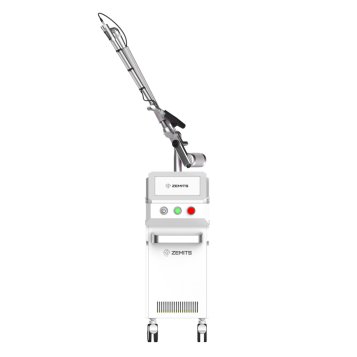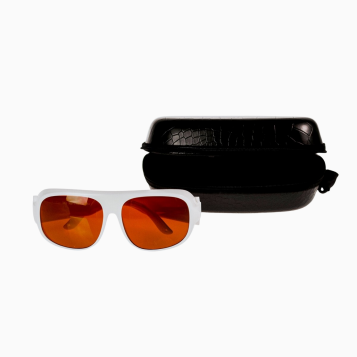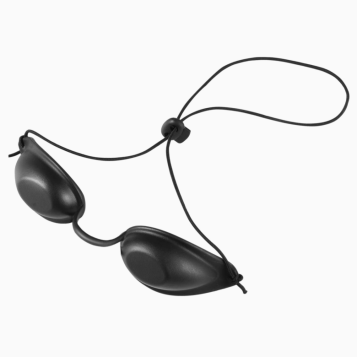- Home / Catalog / Cosmetic Lasers / Tattoo Removal Lasers
Laser Tattoo Removal Machines
Laser Tattoo Removal is a treatment that has been able to transition the course of an individual’s life. It can be challenging to believe that a laser can remove the pigment from an unwanted tattoo.
It’s okay to feel resentment or skepticism when it comes to removing a tattoo. We have all been taught that once a tattoo is inked on your body, there is no going back. It will be there forever.
Is there a treatment or a machine that delivers effective results against removing tattoos? If Laser Tattoo Removal is highly effective, why wouldn't anyone with regrets go through the treatment?
It can be intimidating and scary to put your trust in a laser to remove ink from the skin. Thankfully, we can break down almost all the aspects of Laser Hair Removal.
Whether you are interested in going into a Laser Hair Removal Course to perform the treatment, or looking to receive the treatment, there are multiple factors to consider if this is the correct path for you.
Professional Laser Tattoo Removal Machines
Of course, to perform Laser Hair Removal, you will need the proper equipment. You will also need the appropriate training to provide a service using a laser.
Surprisingly enough, there are also different types of hair removal systems that we will break down. This transformative process will be a long one, so buckle up.
What Is Laser Tattoo Removal Equipment?
To perform a high-quality service, you will need a professional device. Laser Tattoo Removals are all done with the power of one machine. The machine encompasses the laser, which will be doing all the work.
Of course, each machine has its quirks and differences. Some machines will be great to treat any tattoo universally, or they can only perform under certain conditions.
What Benefits Your Clients Can Get From Laser Tattoo Removal Machines?
While this treatment can sound harsh and abrasive or damaging to the skin, it can be quite the opposite. According to Rejuva Medical, “Laser Tattoo Removal effectively reduces the appearance of tattoo ink without causing lasting effects to the surrounding skin.”
Clients will be more inclined to receive Laser Tattoo Removal if they know the integrity of their skin will remain intact. The last thing clients want to do is damage their skin even further by removing an unwanted tattoo. Laser Tattoo Removal is safe and is also FDA-approved.
Types of Laser Tattoo Removal Systems
There are various types of Laser Removal Machines that perform differently. The most common lasers you will find in clinics are Nd: YAG, Alexandrite, and Ruby.
These are also known as Q-switching Lasers. Astanza Laser states that Q-switching “ is the technology used for tattoo removal procedures. It produces a specific type of quick, powerful pulse that shatters tattoo ink without harming surrounding skin tissue.”
Q-Switching lasers are the only lasers proven to be effective and also safe, and harmless to the surrounding skin. Other factors that can determine the difference between laser machines are their power, wavelengths, and FDA approval.
How Does Laser Tattoo Removal Machines Work?
It can be mind-boggling wondering how a laser can break up a tattoo. While treatment can last for weeks on end, there is an explanation of why it can take so long for the tattoo to disappear.
New Look Laser College explains the science behind the procedure as “ a pulse of energy that penetrates the skin and is absorbed by the tattoo ink. The tattoo ink particles absorb the energy. They heat up and shatter in tiny fragments.”
It will take multiple laser treatments to break up the pigment, especially in larger tattoos. The laser can only penetrate the skin to a certain extent.
Once the first top layers have been zapped, the dermis will absorb the shattered pigments and let your cells carry them away. After that, deeper layers of the skin can be reached by the laser.
Now that you know more about how the procedure works, we can move forward to what other characteristics go into Laser Hair Removal.
Laser Tattoo Removal Treatment
Let’s cover all the questions you are dying to have answered about Laser Tattoo Removal. What results can you expect? Is it a high maintenance treatment? Should I be skeptical of this treatment?
What Is Laser Tattoo Removal Treatment?
Laser Tattoo Removal is a treatment that involves the use of a specific laser to break up the pigments of a tattoo. It is an FDA-approved treatment that is proven to be safe and effective.
This laser will break up the pigments that your body will carry out of your system. Over time and throughout the course of multiple laser sessions, the tattoo will gradually disappear without irritating the skin even further.
Who Needs Laser Tattoo Removal Treatment?
If you have a tattoo that you regret entirely and want to remove it, then you are an excellent candidate to receive Laser Tattoo Removal. Anyone who regrets their ink from the past can look into this procedure.
It’s essential to keep in mind that different lasers will provide different results. Always schedule a consultation at your nearest clinic to see how you can benefit from Laser Tattoo Removal.
Does Laser Tattoo Removal Really Work?
Astanza Laser claims that “ Laser Tattoo Removal is the most effective method to eliminate tattoo ink without scarring. It is safe for all skin tones and works on virtually all inks.”
If Laser Tattoo Removal interests you, then it’s essential to keep in mind that you will most likely need more than one session of laser treatment before seeing a result.
Numerous factors will determine how your tattoo will fade over time. This is also a great topic of conversation to bring up at a consultation for Laser Tattoo Removal.
Laser Tattoo Removal Results
The results of your Laser Tattoo Removal journey will heavily depend on several factors. Astanza Laser includes the following:
- Size of The Tattoo
- Depth of Pigmentation
- Age of The Tattoo
- Ink Composition
- The Density of The Ink
- Patient Health
The type of laser will also heavily influence the results you will see. Some lasers are built for a wide variety of tattoos and others only work with certain kinds of ink.
You will need a few weeks in between each session of Laser Tattoo Removal. This will also allow the pigments to break up and disappear properly over a certain amount of time. Don’t underestimate the time you allow your body to heal.
How Often To Get Laser Tattoo Removal Treatment?
Healing is a highly significant process of Laser Tattoo Removal. Without letting the tattooed area heal, the procedure will not be as effective, and the skin will not be ready for the next laser session.
It’s generally recommended to wait a few weeks in between each laser session treatment. This will not only depend on the size and composition of your tattoo but also on your clinic.
Your Laser Tattoo Removal Specialist or Esthetician will recommend to wait about 4 weeks to 8 weeks in between Laser Tattoo Removal Treatments.
What Are The Side Effects Of Laser Tattoo Removal? Does it Hurt?
It’s been said quite often that the process of Laser Tattoo Removal and pain go hand in hand. However, most people agree that it is comparable to the pain of receiving a tattoo. Others will say it is even less painful than getting tattooed. Regardless, each person has their own pain tolerance.
What are the side effects of Laser Tattoo Removal?
They are just what you would expect. Here is what you should look out for:
- Tenderness
- Soreness
- Redness
- Swelling
- Risk Of Infection
- Scaring
- Discoloration
These are a few things to keep in mind. Always ask during your consultation what you should expect after each laser removal session. If your skin is sensitive, you may notice these symptoms more than others.
How many Laser Tattoo Removal Treatments are Needed?
Now, the number of treatments you will need will heavily depend on each client. Your health, skin condition, tattoo size, and composition, among other characteristics, will determine how many sessions it will take to remove the tattoo thoroughly.
On average, it can take anywhere between 6 to 8 treatment sessions. Now it can also go up to 10 sessions or as little as 5. Each person will have their own experience and journey for their Tattoo Removal.
How Long Does It Take To See Results From Laser Tattoo Removal?
One thing to learn about Laser Tattoo Removal is that it takes a lot of patience to go through the process. Each person will have a different experience depending on the characteristics of their tattoo.
On average, you will be able to see results after you’ve had a few sessions. In a month or even a few months, you will start to notice your body healing and breaking down the tattoo. It will gradually fade over time after each treatment.
What Is The After-Care For Laser Tattoo Removal?
Laser treatment is no joke, and if you are receiving or administering Laser Tattoo Removal, then you must stress the importance of aftercare.
Thankfully, it won't be too stressful to take care of the skin after each treatment. It’s very similar to how you would treat any other breaks in the skin, infections, or irritated areas.
You will need an antibiotic cream to protect the tattooed area from possible infection and soothe the skin after the treatment. You may also need to wear a bandage on your lasered area and change the bandage frequently.
Scabbing is a side effect alongside swelling and blistering. Avoid picking out touching the area at all costs, and once it goes away, continue to use the antibiotic cream.
Always apply SPF. You don't want to damage your skin in the sun even further after a laser treatment. Consult with your physician for the exact steps to take and how to adequately take care of your skin during your Laser Tattoo Removal procedure.
How Long Do Laser Tattoo Removal Results Last?
It will take at least a year or two for your tattoo to disappear from your skin. However, because each client is different, so will the results. In most cases, a tattoo will be completely removed forever.
Other times a tattoo will fade and can slightly remain on the skin. Scarring may occur if the aftercare procedures were not performed correctly or the client is already prone to scarring.
This is an important point to bring up with a physician at the consultation if you are interested in learning about Laser Tattoo Removal’s long term results.
Is Laser Tattoo Removal Good For “Skin Tightening”?
While lasers do have the power to remove tattoos and tighten the skin, there is a chance that these lasers are structured differently from each other. Consult with your physician for further questions.
Laser Tattoo Removal Benefits
Potential and Reported Benefits of Laser Tattoo Removal Are:
- It’s a safe and easy procedure
- It has a few side effects and a short recovery time
- Effective at fading ink over time
- Can reduce risk of scarring
- Can keep the skin’s integrity
Laser Tattoo Removal Recovery Time
You will need a few weeks in between each session to allow for proper recovery. Overall the entire process could take a year or two.
Laser Tattoo Removal Pros and Cons
Pros
- It is not a surgical procedure and non-invasive
- High success rate
- Easy procedure
- Somewhat painless
Cons
- Costly
- Risk of Infection
- Skin Irritation
- Scarring
Laser Tattoo Removal Treatment Before and After
Laser Tattoo Removal Cost
If you are interested in Laser Tattoo Removal, plan to budget at least a few thousand dollars for the entire procedure. On average, each session can be a few hundred dollars ($200-$500).
For an exact quote, a consultation will be the best time to ask your clinic/physician.
How Long is Laser Tattoo Removal Treatment?
One treatment is relatively quick. Each session/treatment can take around 20 minutes to 1 hour. It will depend on the tattoo.
What To Expect After Laser Tattoo Removal Treatment?
You may feel uncomfortable, which is normal after a laser session. Your skin will most likely become more sensitive, and you will need to follow your physician’s aftercare instructions. Healing is mandatory before your next session.
Are Laser Tattoo Removal Results Permanent?
Yes, the results will be permanent. Laser Tattoo Removal will either altogether remove or significantly diminish your tattoo over the course of your procedure.
What Are The Other Names Of Laser Tattoo Removal?
Laser Tattoo Removal can be referred to as Lasers like Q-switching or Laser Surgery/Tattoo Removal. The most common name is Laser Tattoo Removal.
Laser Tattoo Removal Alternatives
There are various alternatives; however, they may be more invasive or won't be as effective as a laser:
- Tattoo Removal Creams
- Chemical Peels
- Cryosurgery
- Dermabrasion
Permanent Laser Tattoo Removal Treatment
Who Can Perform Laser Tattoo Removal Treatment?
It varies by state. You will need to be an Esthetician, a Medical Professional, or Trained in Laser Tattoo Removal to perform this procedure. Check your state board’s rules and regulations.
How To Use A Laser Tattoo Removal Machine?
A licensed professional will direct the laser on the tattooed area that needs to be removed and will use the laser machine to pulse energy to the inked area breaking up the pigments within the tattoo.
Each machine and laser can be constructed differently, and it's best to follow the instructions given to you by the manufacturer.
How To Perform Laser Tattoo Removal?
Laser Tattoo Removal Treatment Protocol
Always ensure the safety of the client and yourself with protective gear if necessary. Follow state rules and guidelines for performing Laser Tattoo Removal.
Each machine or each type of laser will have its protocol that you must be trained to handle and follow adequately.
Laser Tattoo Removal Treatment Steps
The steps during a Laser Tattoo Removal session are actually pretty simple.
- A numbing agent is applied to the tattooed area to reduce the potential for pain.
- The laser will then glide over the tattoo, and pulses of energy will penetrate the skin to break up the particles and pigments.
- The session is complete, and your physician will guide you through your aftercare procedures.
How Long To Wait Between Laser Tattoo Removal Treatment?
You will need to wait at least 4-10 weeks between each treatment, depending on your tattoo. Your body needs to heal correctly in order to move forward with the procedure.
Laser Tattoo Removal Treatment Areas
Laser Tattoo Removal Treatments are designed to treat any area where there is an unwanted tattoo. Any abnormalities or questions should be brought up during a consultation.
Laser Tattoo Removal Machine Maintenance
Each machine will require different maintenance. The manufacturer or brand will most likely provide a warranty, a technical support specialist, or a customer service representative to help you guide or tweak your machine.
If you are training to become licensed in Laser Tattoo Removal, you will be required to learn how to operate and maintain these machines.
Laser Tattoo Removal Consumables/Expenses
There are a few consumables when it comes to Laser Tattoo Removal like:
- Numbing Agents
- Protective Gear
- Bandages
- Tape
Depending on staff, workplace, training, or other factors can influence your expenses and consumables.
Laser Tattoo Removal Training
You will most likely need a Laser Tattoo Removal Certification in order to perform Laser Tattoo Removal.
Because laws regarding Laser Tattoo Removal are incredibly different state by state, it's best to find your state’s rules and requirements to become certified in Laser Tattoo Removal.
Schooling, costs, hands-on experience, etc., can vary by each state in the US.
Laser Tattoo Removal Consent Form
A consent form will always be required to protect the practitioner and the patient. The patient should be aware of any potential risks and side effects, and give the clinic permission to perform the service.
The practitioner will want to protect themselves against any possible or unnecessary liabilities while performing Laser Tattoo Removal.
Benefits Of Laser Tattoo Removal Machine For Your Esthetic Business
Overall, Laser Tattoo Removal can become a highly profitable business for any Esthetics office. The procedure is quick and easy with minimal consumables. The patient won’t need any downtime and will just need to follow proper aftercare instructions.
Treatments You Can Perform With Laser Tattoo Removal Machine
According to Laser & Skin Surgery Center of New York, various lasers can perform different tattoo removal treatments. Besides completely removing a tattoo, treatments that can also be performed are:
- Treat Gradient Tattoos
- Treat Cosmetic Tattoos
- Treat Decorative Tattoos
- Treat Permanent Make UP
Instagram Hashtags for Laser Tattoo Removal Procedure
#tattooremoval #lasertattooremoval #tattooremovaljourney #qswitching #picolaser #lasertreatment #tattooremovalspecialists #tattooregret #lasertechnology
Summary
Laser Tattoo Removal is a safe, easy, and an effective way to remove unwanted tattoos. There is little to no downtime and only a few minor side effects to expect during your procedure.
Whether you are performing or receiving Laser Tattoo Removal, patience is the number one thing required while going through this procedure.
You will need multiple sessions depending on the tattoo, and you will also need to wait a few weeks or months in between sessions to allow the body to work its magic and heal.
While the process is time-consuming and tedious, you may also find it expensive. However, the results can last a lifetime. The price and time of the procedure will be worth it to get rid of an unwanted tattoo.
To become certified in Laser Tattoo Removal, always check your state’s rules, requirements, and regulations to see how you can become eligible to perform this service.
Laser Tattoo Removal is an excellent service to offer in an Esthetics business since the consumables and expenses are relatively low, and it is a short procedure to administer.
Finally, the feeling of regret can leave your body. Whether you are interested in performing or receiving Laser Tattoo Removal, it will definitely be a procedure worth going through to obtain lifelong results.















Connecticut, Delaware, Florida, Georgia, Hawaii, Idaho, Illinois, Indiana, Iowa, Kansas, Kentucky, Louisiana, Maine, Maryland, Massachusetts, Michigan, Minnesota, Mississippi, Missouri, Montana, Nebraska, Nevada, New Hampshire, New Jersey, New Mexico, New York, North Carolina, North Dakota, Ohio, Oklahoma, Oregon, Pennsylvania, Rhode Island, South Carolina, South Dakota, Tennessee, Texas, Utah, Vermont, Virginia, Washington, West Virginia, Wisconsin, Wyoming
















